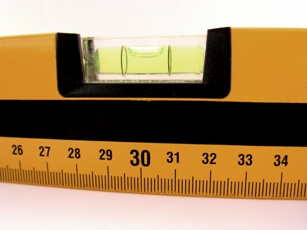- S – Specific (or Not Open-ended).
- M – Measurable (or Meaningful).
- A – Attainable (or Action-Oriented).
- R – Relevant (or Ownable).
- T – Time-bound (or Trackable).
Today lets look at two of the most important points to remember when setting a goal.
TO SET GOALS THEY MUST BE SPECIFIC

Set goals and write them as specific, and with as much details as possible. We tend to want to take the path of least resistance in life.
It’s easy to say, my goal is to “Love everyone”, when we should be striving to “Love our neighbor next door”. To accomplish set goals we must be specific as possible. Remember our minds do not function well with vague or ill-defined concepts. We should give our mind a set of detailed instructions to work on. The more information we give it, the clearer the final outcome becomes.
Sometimes we need to list what we really want in a goal. Instead of writing “A new home”, write “A 3,000 sq. ft. turn of the century home with 4 bedrooms, 3 baths, large front porch, view of the mountain on at least 3 acres of land”.
An example of a more precise goal would be, “Loose 10 lbs by my next birthday”, instead of just writing down “Loose weight”. The more specific we can be, the easier it is for us to take action.
Remember the more precise we specify an outcome, the more efficient we can be in setting proper action steps. With a specifically defined goal, it is easier for us to find the steps we have to take to reach various aspects of our goal. With this in mind, we can work on the next point of good goal setting which is: How will you measure your progress?
We must set goals that are measurable
 If you can’t measure it, you can’t manage it. A goal must have a deadline, and when you set up goals you must ask yourself: How do I measure success?
If you can’t measure it, you can’t manage it. A goal must have a deadline, and when you set up goals you must ask yourself: How do I measure success?
Set a limit to your goal, because this is the best way to measure your rate of success, or failure as the case may be.
Choose a goal with measurable progress, so you can see the change occurring. For example if you write, “I will read three books before my next birthday”, then on your birthday, you will know whether you reached your goal. If you say, “I want to read more”, you probably wont because “more” is hard to measure and probably wont be reached.
Measurable goals must answer things like:
- How long do I need to reach the goal?
- How much do I have to do, work, save etc?
- Who can I get to help me keep track of my progress?
- Where does it need to take place?
- What metric do I use to measure success (time, accomplishment, psychical results, location etc.)?
- When does it have to be done (is there a specific time it has to be done)?
- Why do I want to do this and what is my expectations?
Finally, try to set goals with concrete criteria for measuring progress toward the attainment of each goal. When you can measure your progress it will be easier to stay on track, reach your target dates, and experience the exhilaration of achievement that can spur you on to continue to set goals to help you live your dreams.
Join us next time as we look at How to Set Goals You Can Reach Part 2.



